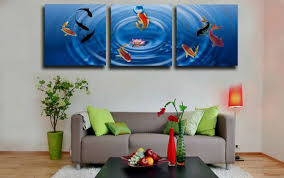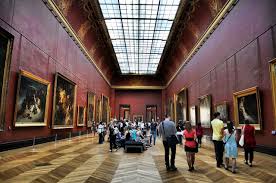HISTORY OF THE ORIGIN AND DEVELOPMENT OF MONUMENTAL PAINTING (part 2)
 The term “fresco” came to Russia from Italy no earlier than the 18th century. This can be judged by the fact that even in the XVI-XVII centuries it was not found in Russian documents, and they wrote about this nature of work in annals, charters, and decrees: “a wall letter in raw gesso.” The term “wall writing” meant all paintings on architectural surfaces made using any technique, whether it was painted on raw gesso, on an emulsion binder or adhesive.
The term “fresco” came to Russia from Italy no earlier than the 18th century. This can be judged by the fact that even in the XVI-XVII centuries it was not found in Russian documents, and they wrote about this nature of work in annals, charters, and decrees: “a wall letter in raw gesso.” The term “wall writing” meant all paintings on architectural surfaces made using any technique, whether it was painted on raw gesso, on an emulsion binder or adhesive.
The mural was widespread in past eras. It is assumed that she was known in Ancient Greece, she wrote in ancient Rome, Byzantium, in Russia X-XII centuries. Numerous murals are made in medieval Europe.
Significant and outstanding works are created in this technique. Starting the conversation about the mural as a mural technique, it should immediately be said that there was no single mural technique, that is, a single writing system on moist calcareous soil. This technique, originating in the depths of ancient culture, was then spread to the entire European culture region, and naturally that during its application by different peoples and for a considerable time it changed in accordance with the artistic tasks that faced the masters of a certain era and region, based on the traditions of craftsmanship and properties of steel materials. The only thing that is characteristic of all its modifications is the lime binder of its primers and paints. Everything else is represented by a kaleidoscope of soil formulations, methods for applying them, an assortment of paints, writing systems, etc.
Most often, tempera paints were used (mainly solid ones), which were used to finish and prescribe frescoes when their paint layer had dried, which was often dictated by the need to correct failed fragments and add details.
“The statement of individual researchers that Michelangelo, Raphael, and many other Italian masters of the 16th century wrote their works only using the technique of one clean mural is completely incorrect. They, like in earlier centuries, used dry plaster retouching and painting with separate mineral paints in the form of tempera. ” However, J. B. Armenini (XVI century) in his treatise writes that in his time some artists retouched frescoes even with pastel pencils and oil paints. It should be added that in none of the monuments of Russian mural painting of the X-XVIII centuries murals made only by a fresco – all of them to one degree or another are finished dry. Nowhere has there ever been a fresco painted like watercolors, that is, the writing system is very liquid, diluted only with water colors and paints. Modern science has no unconditional reason to consider the fresco as the oldest technique of mural painting, since scientific studies of the soils of ancient Egyptian murals conducted in our time convincingly show that the ancient Egyptian culture did not know lime and that this material came there only in the Ptolemaic era, that is, not earlier than IV century BC e.
The fresco is among other techniques of monumental painting, closest to easel by the very process of writing with paints. And although the artist does not work with a palette in his hand and not at the easel, but near the wall (often huge), the painting in its manifestation is one. A wet colorful brush in the artist’s hand is subordinate to his will, his character. We see in the frescoes the power of modeling with color, traces of strokes, density, transparency of paints and at the same time “sound”.




